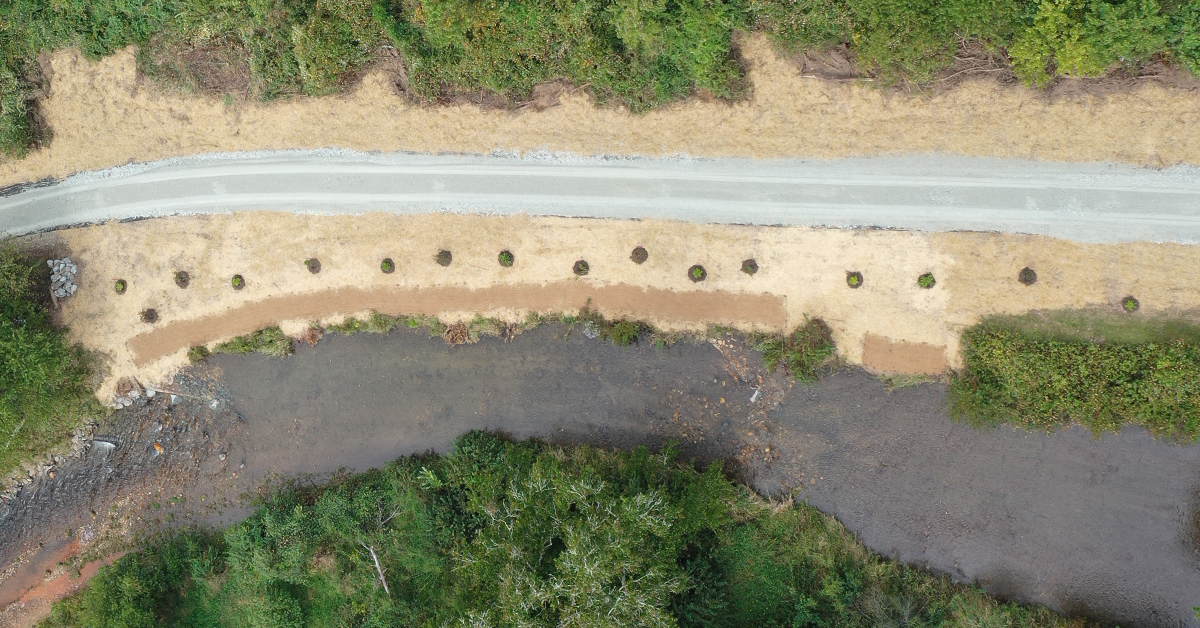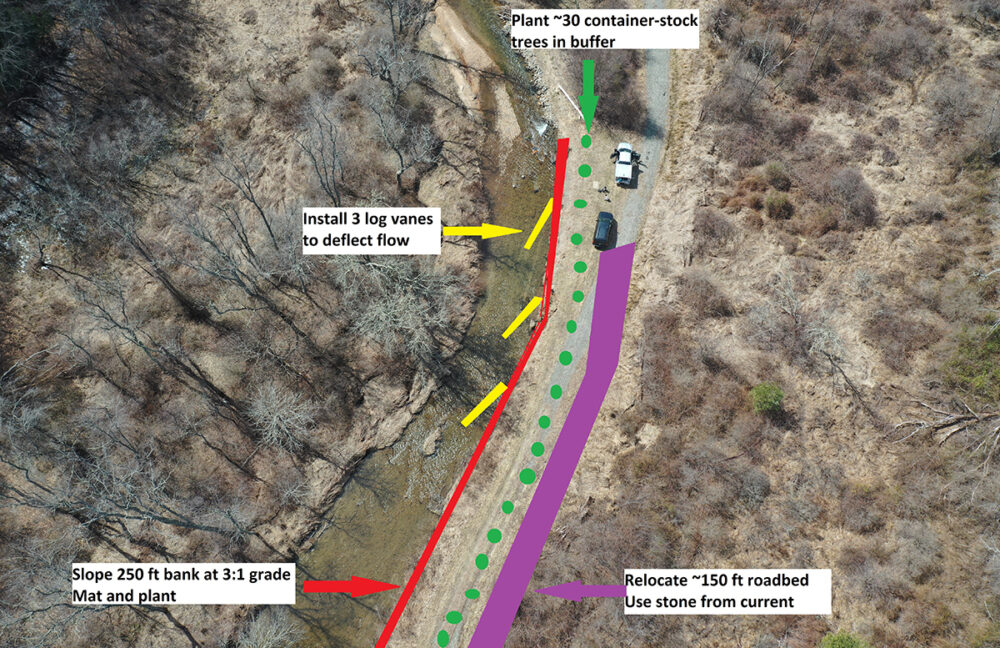
By Molly Kirk/DWR
One of the projects made possible in 2022 with Restore the Wild membership funds was a streambank stabilization and riparian buffer enhancement project in Carroll County, on the east fork of Crooked Creek in the Crooked Creek Wildlife Management Area (WMA). The project benefitted not only the trout in Crooked Creek, but also other resident fish species such as the Kanawha darter, a fish species that’s one of Virginia’s species of greatest conservation need.
Led by DWR’s Stream Restoration Specialist, DWR Lands and Access staff, and DWR Wildlife and Fisheries Biologists, the project addressed 250 linear feet of active streambank erosion on the East Fork of Crooked Creek in Carroll County, as well as moving 150 feet of the existing stocking road away from the stream in order to establish a 1/3-acre planted riparian buffer of trees and shrubs.

Water quality benefits from this project include reduced sediment in the channel from bank erosion. Additionally, water temperature will be reduced over time as the trees and shrubs get large enough to provide shade to the creek. Lower temperatures benefit trout, as they are especially sensitive to thermal increases.
Reducing sediment in the channel and water column within the stocked fee-fishing area will improve the conditions for the stocked trout. The project also benefits other aquatic and terrestrial species in this location. Slightly raising the road elevation will also potentially benefit the adjacent wetland area by increasing the impounded water level and reducing excessive water accumulation in the roadway (access and road-maintenance benefit).
The tree and shrub planting addressed a gap in the riparian buffer along this stretch of Crooked Creek, helping to connect that terrestrial habitat and provide food and cover for small mammals, amphibians, and birds.




